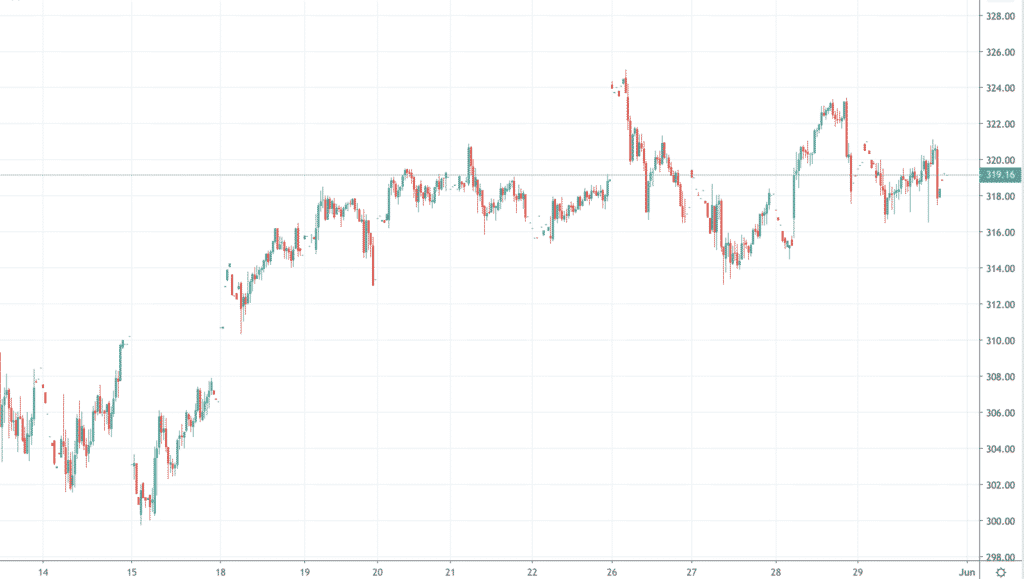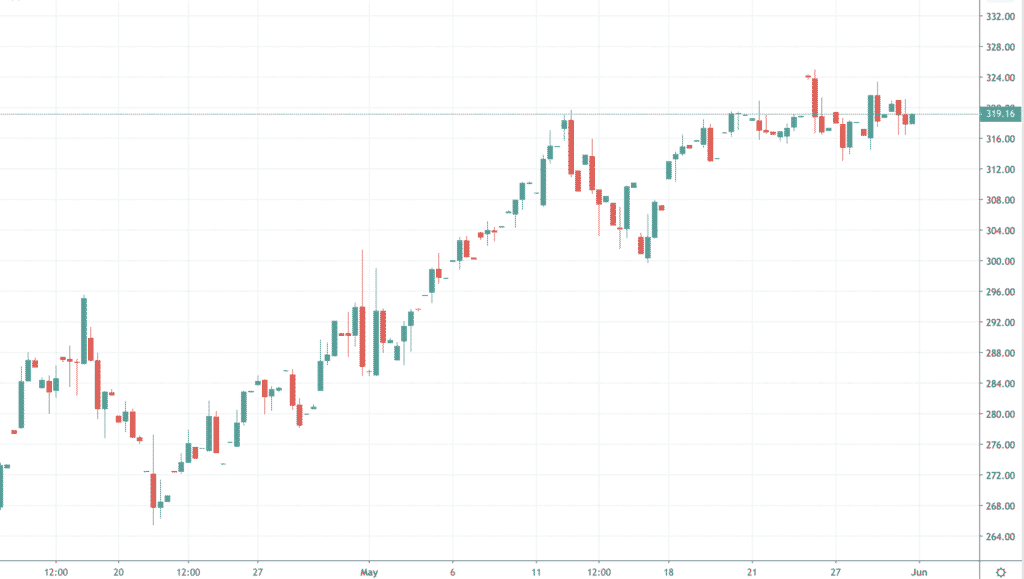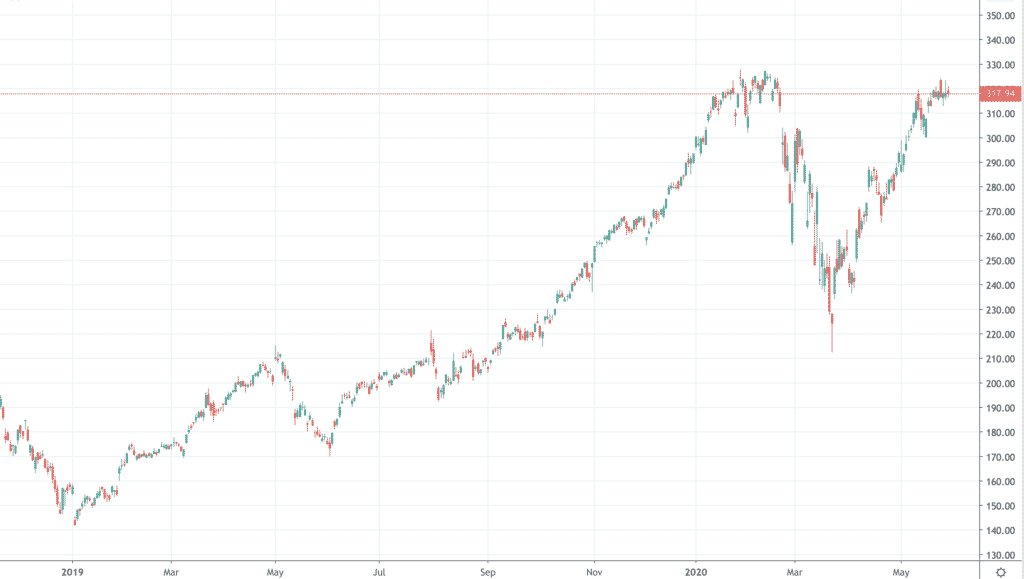Time frames can be a challenging aspect of trading to understand. Not just for beginners, but the idea of time frames even causes issues for more established and veteran traders.
What we’ll cover
- Concept of trading time frames
- How they work
- Why understanding them is essential
- Different time frames and how they’re used
We’ll be looking at examples and explore what are the best time frames to trade forex. We’ll also cover using multiple time frames, which is key when using technical analysis.
How Do Time Frames Work?
Time frames work by giving you trader a framework to approach your trading strategy. There are three aspects to consider when looking at time frames from a technical analysis perspective. These three concepts are easily and regularly confused. Understanding the differences will go a long way in getting you up to speed with time frame analysis. When we discuss time frames in charting, we’re describing:
- The expected length of the trade or investment
- The amount of time we base our analysis on
- The time interval of the chart
These three concepts are different but are related when we look at trading time frames in financial market analysis.
Length of the trade
Let’s look at the expected or anticipated length of the trade or investment. You don’t know exactly how long any trade will take to hit your target level. But before you start to build a trading strategy or idea, you should know what type of trade it is. For instance, what is your target price and how long will it take before it’s hit.
That effectively defines what type of trader you are. Are you looking for a rapid return over a few minutes, or intend to hold it for less than a day, like a day trader, maybe just a few hours? Perhaps you are trading for a full day and exiting the trade before the end of the day? You may look to hold the trade over multiple days, weeks, months or years (which would be more like an investment).
Amount of time we base analysis on
Let’s now look at the amount of time over which you are going to base your analysis. This is going to be defined by the expected or anticipated length of the trade. If you are going to be seeking a very short-term trading result, to take a profit over a matter of minutes, you are going to be looking back a short time. Maybe only looking a few hours back, or possibly at most a day or two. At the other extreme, if you intend to hold a trade, or an investment, for multiple months or years, you will want to do your analysis looking at a very long time frame. That will involve looking at price data for months, years, even decades. Between these two extremes, there are different options for you as the trader looking to hold trades for hours, a day, multiple days or weeks. We will look at this in more depth below.
The chart time interval
Finally, there is the choice of time frame. The options here range from tick charts to almost any time frame. This could be in minutes, hours, days, months and years. Again, the time frame of the chart that you’ll choose will depend on the anticipated length of the trade. Short term traders will need smaller time intervals whilst longer term will won’t need each price movement during a day. They’re more likely to use 4-hour charts, daily or weekly to base decisions on.
Why Are Time Frames Important In Trading?
Time frames are important in trading because if you choose the wrong time frame to do your analysis, either the amount of back data you take into consideration or the time interval of the chart, then you are likely to struggle to produce decent analysis and trade opportunities. Or, you are very likely to achieve undesirable results, meaning more losing trades.
Furthermore, if you confuse or mix your time frames, that can also have negative impacts on your results. For example, if you started with a trade on a certain time frame, maybe with an objective of a result in a couple of hours and it does not go to plan, it can be appealing to shift the time horizon of the trade. That might be to lengthen the trade out, and adjust targets and exit stops. However, if the original analysis was not conducted on this new time frame, the chances of a positive result or outcome are significantly decreased. An important message to any new trader is not to mix time frames.
How Many Types Of Time Frame Are There?
There are three main time frames. Generally speaking, in trading, time frames are split down into short term, medium term and long term.
Short Time Frame
The short time frame is generally seen as any trade made with the intention to hit the target in a day. That means looking at data going back between 1–10 days, probably with a chart from one minute, up to 30 minutes.
Medium Time Frame
A medium time frame is seen as a trade over multiple days, maybe out to several weeks, with the target looking to be met within that time horizon. The historical data you would use to analyse the trade would be 5–30 days, using a time interval of between 15 minutes up to a daily chart.
Long Time Frame
The long time frame for trading is defined as multiple weeks and longer for the expected holding period of the trade. The historical data you would use to analyse the trade would be from approximately four weeks to possibly many years, using a time interval of four-hour charts, through daily charts, even weekly charts.
If you are looking at holding a trade for many months and years, it pushes the trade into the world of investing. It’d be described as an investment rather than a trade.
What Are The Most Commonly Used Time Frames?
The most commonly used time frame for the trader are the short time frame. But you must remember that different types of traders use different time frames, and there is not any set or more popular type of trading time frame. What is best for you will depend on your preferences, the time you can commit to trading and the goals you are looking to meet. The time frame that you find that you are better at, may be discovered over time by testing various strategies over different time frames.
Short Time Frame Examples
An example of a trade over a short time frame is shown below, with a set up looking back 10 days, on a 15-minute time frame, seeking to achieve the target within one day.

Medium Time Frame Examples
Below is an example of a trade over a medium time frame, looking to achieve the target within one week. Here we use a trade set up analysing price data looking back ten weeks on a four-hour time frame.

Long Time Frame Examples
Shown below is an example of a trade over a long time frame. It looks to achieve the target in three months. Here we have a set up looking back 18 months, on a daily time frame.

What Is The Best Time Frame To Trade Forex?
There is not a best time frame to trade forex. As with trading any other asset class, the time frame decided upon would depend on your analytical and psychological strengths and weaknesses. Plus, the amount of time you can be given to monitoring and watching markets, your goals and risk profile. You can successfully trade forex on a very short time frame, for minutes or less, for days, weeks or months and years. Trading forex on a short-term time frame does have advantages over other markets because it offers more liquidity. This means that you can enter and exit at the price you wanted to. In other asset classes, this can be more difficult because there are less buyers and sellers to offer you a price.
Technical Analysis Using Multiple Time Frames
Ideally, when using technical analysis to decide upon your trading view, you would be looking for multiple time frames to align, to make the likely outcome from the trade to be positive. So, you would maybe look for your analysis on a short, medium, and long time frame to all be pointing bullish, for the market to go up. That would, therefore, increase the probability of a more profitable outcome.